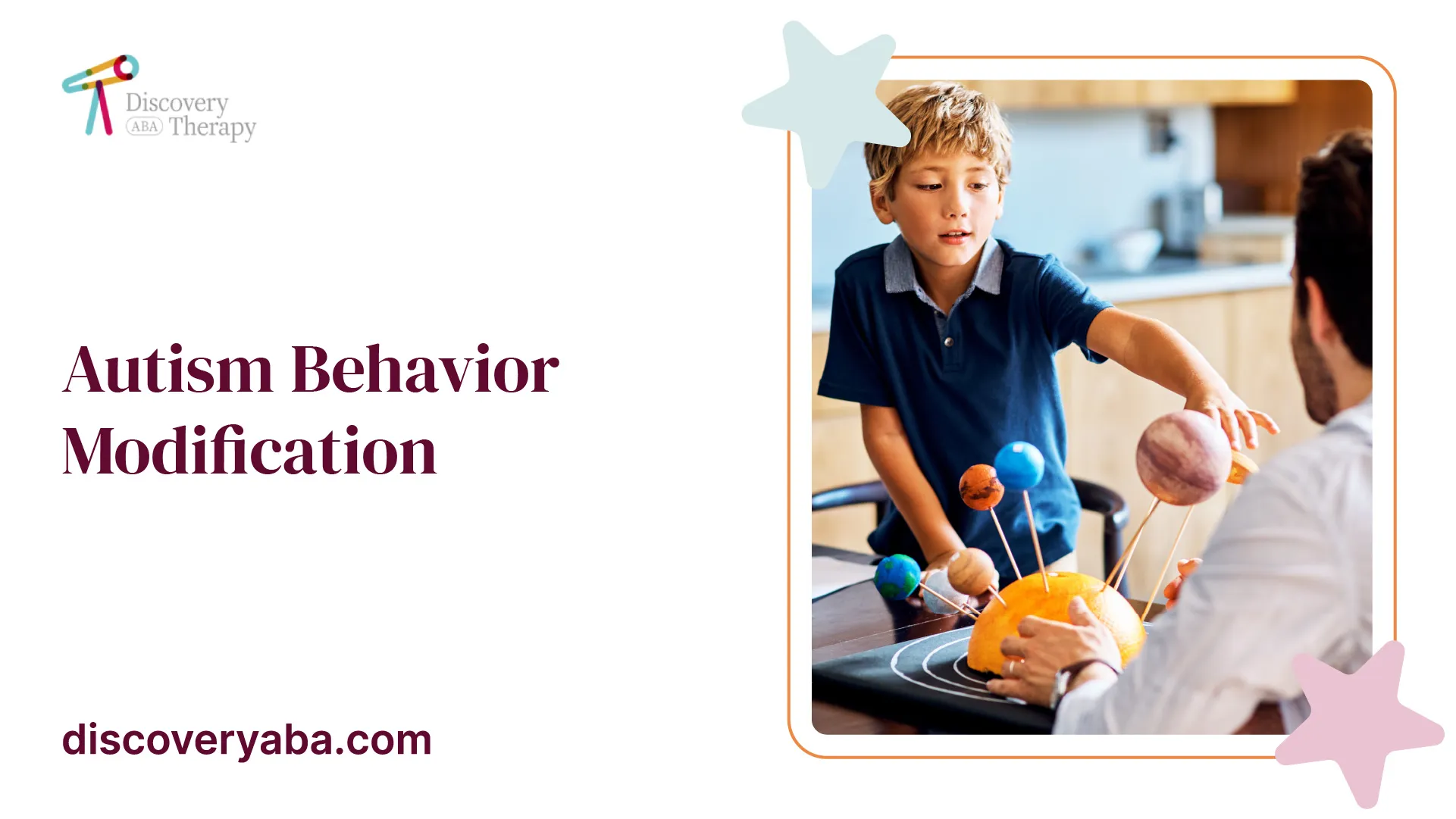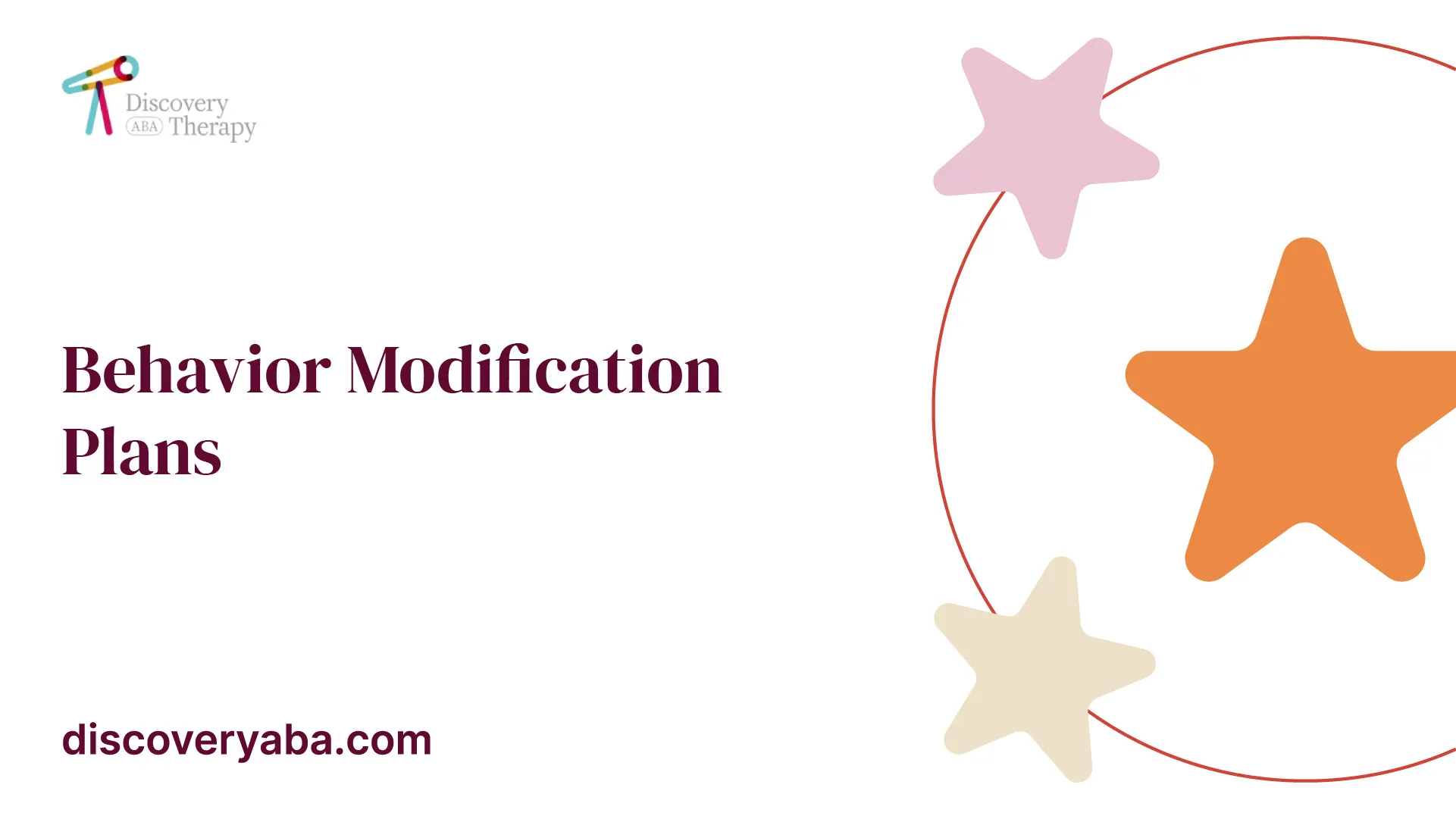Autism Behavior Modification
Discover promising autism behavior modification approaches to break barriers and promote positive behaviors in individuals with autism.


Understanding Autism Behavior
When it comes to understanding and addressing the behavior of individuals with autism, it is crucial to implement effective strategies that are tailored to their specific needs and challenges. By developing individualized behavior strategies, we can promote positive behaviors and minimize challenging behaviors in individuals with autism.
Individualized Behavior Strategies
Individualized behavior strategies are essential for individuals with autism as they focus on specific behaviors and challenges that each person may face. These strategies aim to increase desired behaviors while reducing undesired behaviors. By tailoring the strategies to the individual's unique needs, we can create an environment that supports their development and well-being.
These strategies can help build a sense of pride in accomplishments, personal responsibility, and understanding of expectations. By doing so, they can reduce anxiety and reactivity that may lead to aggression or other challenging behaviors. It is important to remember that what works for one individual may not work for another, underscoring the need for personalized approaches.
Applied Behavior Analysis (ABA)
One of the most widely recognized and effective behavior modification approaches for autism is Applied Behavior Analysis (ABA). ABA is a behavioral management therapy that focuses on reinforcing desired behaviors and diminishing undesired behaviors. It provides guidance for caregivers on actions to take before, during, after, and between episodes of problematic behaviors.
ABA therapy is grounded in the principles of behavior analysis and monitors a child's advancement in enhancing their skills. It has been shown to be highly effective in improving a range of skills, such as language development, social interaction, self-help skills, and academic abilities.
Early Intensive Behavioral Intervention (EIBI) is a specific approach within ABA therapy that has demonstrated significant improvements in IQ and adaptive behaviors, particularly in areas such as language, daily communication, social interaction, and self-help skills.
Research consistently demonstrates that individuals with autism who receive early and intensive ABA interventions experience significant developmental improvements. These interventions have shown positive effects in areas such as language development, cognitive skills, self-help skills, and academic abilities. Moreover, the benefits of ABA therapy have been found to persist even beyond the duration of the intervention, suggesting lasting impact on individuals with autism.
In summary, understanding autism behavior requires the implementation of individualized behavior strategies and approaches such as Applied Behavior Analysis (ABA). These strategies and interventions play a vital role in promoting positive behaviors, enhancing skills, and improving the overall quality of life for individuals with autism.
Read more about: Lovaas Method Of Aba Therapy
Behavior Modification Plans

Behavior modification plans play a crucial role in managing and improving behaviors for individuals with autism. These plans are designed to address challenging behaviors and promote positive change in various settings such as schools, homes, and therapeutic environments. In this section, we will explore three important components of behavior modification plans: Behavior Intervention Plans (BIPs), Functional Behavior Assessment (FBA), and Early Intensive Behavioral Intervention (EIBI).
Behavior Intervention Plans (BIPs)
Behavior Intervention Plans (BIPs) are essential tools in the management of autism behaviors. They are created to specifically address challenging behaviors and provide strategies to replace them with more appropriate and desirable behaviors. BIPs are individualized, taking into account the unique needs and characteristics of each person with autism. These plans are developed based on a thorough assessment of the individual's behavior and the factors contributing to it. The goal of BIPs is to promote positive behavior change and enhance the individual's overall functioning.
Functional Behavior Assessment (FBA)
Before developing a behavior intervention plan, it is crucial to conduct a Functional Behavior Assessment (FBA). FBA is a systematic process used to identify the underlying factors that contribute to challenging behaviors in individuals with autism. It involves gathering information about the individual's behavior, such as when, where, and why it occurs. The assessment helps identify patterns and triggers, allowing professionals to develop targeted strategies for behavior modification. By understanding the function of the behavior, interventions can be tailored to address the specific needs and challenges of the individual [1].
Early Intensive Behavioral Intervention (EIBI)
Early Intensive Behavioral Intervention (EIBI) is a highly effective approach for individuals with autism, particularly in early childhood. EIBI focuses on providing intensive and structured intervention to promote skill development and reduce challenging behaviors. The intervention typically involves one-on-one therapy sessions delivered by trained professionals. EIBI has shown significant improvements in IQ, language skills, social interaction, and self-help skills. It has been found to be particularly effective when initiated early in a child's development [1]. Studies have reported consistent improvements in IQ and adaptive behaviors, even 12 months after EIBI initiation [2].
By implementing Behavior Intervention Plans (BIPs), conducting Functional Behavior Assessments (FBA), and utilizing Early Intensive Behavioral Intervention (EIBI), individuals with autism can receive targeted support to address challenging behaviors and promote positive outcomes. These behavior modification plans are tailored to the unique needs of each individual, ensuring personalized care and effective intervention strategies.
Effective Behavior Strategies
When it comes to autism behavior modification, implementing effective strategies is essential in promoting positive behaviors and reducing challenging ones. In this section, we will explore three key components of effective behavior strategies: behavior modification components, positive reinforcement techniques, and sensory sensitivities management.
Behavior Modification Components
Behavior modification components are crucial in developing behavior intervention plans for individuals with autism. These strategies aim to encourage desirable behaviors and eliminate undesirable ones through individualized and flexible approaches based on ongoing monitoring and evaluation. By identifying the specific behaviors that need modification and implementing targeted interventions, individuals with autism can develop and maintain positive behaviors.
Positive Reinforcement Techniques
Positive reinforcement is a fundamental aspect of effective behavior strategies for individuals with autism. This technique involves using rewards to increase the likelihood of desired behaviors recurring. By providing positive consequences immediately following a desired behavior, individuals with autism are motivated to engage in those behaviors more frequently. It's important to note that the effectiveness of positive reinforcement techniques relies on the fidelity of their implementation. Consistency and ensuring that the rewards are meaningful and motivating are key factors in maximizing the impact of positive reinforcement.
Sensory Sensitivities Management
Sensory sensitivities are common in individuals with autism and can significantly impact their daily lives. These sensitivities may affect various aspects, including communication, behavior, and overall well-being. Understanding and accommodating sensory needs is crucial for providing appropriate support to individuals with autism. By creating a sensory-friendly environment and implementing sensory strategies, such as sensory breaks or using sensory tools, individuals with autism can better manage their sensory sensitivities and reduce the likelihood of challenging behaviors.
Understanding and implementing these effective behavior strategies can greatly improve the overall well-being and quality of life for individuals with autism. It's important to remember that every individual is unique, and strategies should be tailored to meet their specific needs. By incorporating behavior modification components, utilizing positive reinforcement techniques, and addressing sensory sensitivities, individuals with autism can thrive and reach their full potential.
For more information on autism behavior modification and related topics, feel free to explore our articles on autism and public speaking, autism telehealth options, and autism therapy statistics.
Promoting Positive Behaviors

When it comes to autism behavior modification, promoting positive behaviors is a key objective. By implementing effective strategies, individuals with autism can develop skills and behaviors that enhance their overall well-being. In this section, we will explore three approaches to promote positive behaviors: structured activities, providing choices, and Positive Behavior Support (PBS).
Structured Activities
Structured activities play a crucial role in promoting positive behaviors among individuals with autism. By providing a clear and organized environment, structured activities help individuals understand expectations and engage in meaningful interactions. These activities can include various tasks such as puzzles, games, and educational exercises.
The predictability and routine provided by structured activities can help individuals with autism feel more secure and reduce anxiety. Visual schedules and timers can be used to outline the sequence of activities and provide a sense of structure. These visual aids can enhance understanding and support smooth transitions between tasks.
Providing Choices
Giving individuals with autism a sense of control by offering choices can be an effective strategy to prevent problematic behaviors. Limiting choices to two to four options and using visual cues or pictures for better understanding can be beneficial [3]. This approach allows individuals to exercise autonomy and make decisions within a structured framework.
When providing choices, it is essential to ensure that all options are appropriate and feasible. By allowing individuals to have a say in their activities, preferences, or routines, they are more likely to be engaged and motivated. This sense of empowerment can contribute to positive behavior outcomes.
Positive Behavior Support (PBS)
Positive Behavior Support (PBS) is an approach that aims to improve the quality of life for individuals with autism and reduce behaviors of concern. PBS incorporates different theoretical frameworks and strategies, focusing on teaching new skills and making changes in the individual's environment. It prioritizes understanding the function of behaviors and providing appropriate support to promote positive alternatives.
PBS emphasizes the importance of creating a supportive environment that encourages positive behaviors. This includes setting clear expectations, establishing consistent routines, and providing appropriate reinforcement for desired behaviors. The use of positive reinforcement techniques, such as praise, rewards, and tokens, can help reinforce positive behaviors and encourage their repetition.
By incorporating structured activities, providing choices, and implementing Positive Behavior Support (PBS), individuals with autism can develop and maintain positive behaviors. These approaches contribute to their overall well-being and enhance their ability to navigate daily life successfully. For more information on autism behavior modification and personalized care, visit our article on autism personalized care.
Behavior Support Techniques
When it comes to behavior modification for individuals with autism, a range of techniques and support methods can be employed to promote positive behavioral changes. In this section, we will explore three essential behavior support techniques: Antecedent-based Interventions (ABIs), Behavior Technicians (RBTs), and Implementation Fidelity.
Antecedent-based Interventions (ABIs)
Antecedent-based interventions (ABIs) are crucial techniques used to modify behavior in individuals with autism. ABIs involve making modifications to the environment or context in order to shape or change behavior. These interventions are implemented following a thorough behavior assessment to identify environmental factors that may be influencing behavior [4].
By addressing antecedents, such as triggers or stimuli that precede undesirable behavior, ABIs aim to prevent or minimize the occurrence of challenging behaviors. This can be achieved by modifying the environment, adjusting routines, providing supports, or implementing visual cues. ABIs are tailored to the specific needs of individuals with autism, taking into account their unique challenges and strengths.
Behavior Technicians (RBTs)
Behavior Technicians, also known as Registered Behavior Technicians (RBTs), play a vital role in supporting individuals with autism and implementing behavior intervention plans (BIPs). These trained professionals work closely with individuals to provide direct one-on-one support and assistance in implementing strategies outlined in the BIPs [5].
Under the supervision of Board-Certified Behavior Analysts (BCBAs), RBTs utilize their knowledge and expertise to effectively implement behavior support techniques. They work collaboratively with individuals with autism, their families, and other team members to ensure consistent and effective implementation of behavior interventions. RBTs play a critical role in tracking progress, collecting data, and making adjustments to the behavior intervention plans as needed.
Implementation Fidelity
Implementation fidelity refers to the extent to which a behavior intervention plan is executed as intended. It is essential to maintain high fidelity to achieve the desired outcomes. When implementing behavior support techniques, adherence to the intervention plan is crucial for consistency and effectiveness. This includes faithfully following the strategies, techniques, and procedures outlined in the plan.
In a case study, the implementation fidelity of the behavior intervention plan consistently remained high, ranging from 98% to 100% across observations. This high fidelity ensured that the intended strategies were consistently implemented and allowed for accurate measurement of progress.
By employing antecedent-based interventions, utilizing the expertise of behavior technicians, and maintaining high implementation fidelity, individuals with autism can benefit from effective behavior support techniques. These approaches are designed to address challenging behaviors, promote positive behavioral changes, and enhance the overall well-being of individuals with autism.
Long-Term Impact of ABA Therapy
ABA therapy, or Applied Behavior Analysis therapy, has shown significant long-term benefits for individuals with autism. Let's explore the long-term impact of ABA therapy, including sustained skill acquisition, positive outcomes in adulthood, and the importance of individualized treatment plans.
Sustained Skill Acquisition
Research has consistently shown that the skills and behaviors acquired through ABA therapy tend to persist over time. Even after the therapy has concluded, individuals continue to maintain and build upon the gains they made during treatment [6]. This sustained skill acquisition is a testament to the effectiveness of ABA therapy in promoting lasting behavior change.
Positive Outcomes in Adulthood
Individuals who received ABA therapy during childhood often experience better outcomes in adulthood. Studies have demonstrated higher rates of employment, independent living, and overall life satisfaction among individuals who underwent ABA therapy [6]. The skills and strategies learned through ABA therapy provide individuals with the tools they need to navigate various aspects of life, contributing to their long-term success and well-being.
Individualized Treatment Plans
One key aspect of ABA therapy is the development of individualized treatment plans. These plans are tailored to meet the unique needs of each individual, taking into account their strengths, challenges, and specific goals. Individualized treatment plans involve comprehensive assessment, targeted intervention strategies, ongoing progress monitoring, and collaboration with families and other professionals to maximize effectiveness. This personalized approach ensures that the therapy addresses the specific needs of each individual, leading to more meaningful and enduring outcomes.
By focusing on sustained skill acquisition, promoting positive outcomes in adulthood, and emphasizing individualized treatment plans, ABA therapy has proven to be a valuable intervention for individuals with autism. The long-term impact of ABA therapy extends beyond the duration of treatment, empowering individuals to thrive and reach their full potential.
References
Does Your Child Have An Autism Diagnosis?
Learn More About How ABA Therapy Can Help
Find More Articles
Contact us
North Carolina, Tennessee, Nevada, New Jersey, Utah, Virginia
New Hampshire, Maine
Massachusetts, Indiana, Arizona, Georgia
.avif)




































































































